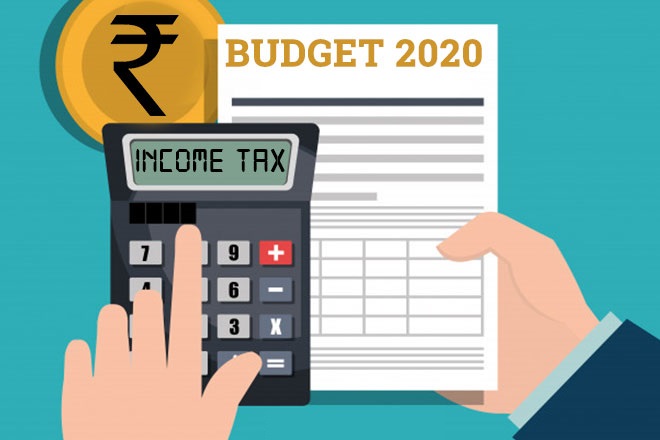On February 01 this year, Finance Minister Nirmala Sitharaman presented the Union Budget for 2020-2021. Taxpayers can now opt between the existing tax regime and the new one.
While citizens are familiar with the existing system, the new option has garnered discussion and debate. It has slashed the tax rates and income tax slabs, but tax exemptions have been removed. Its objective is to move towards a simple, lean and straightforward tax structure – one that is easy to comply with.
The Two Ordinations Compared
| Income Tax Slabs | Existing Tax Rate | New Tax Rate |
| Up to ₹5.0 lakh | Nil | Nil |
| ₹5 lakh- ₹7.5 lakh | 20% | 10% |
| ₹7.5 lakh- ₹10 lakh | 20% | 15% |
| ₹10 lakh- ₹12.5 lakh | 30% | 20% |
| ₹12.5 lakh- ₹15 lakh | 30% | 25% |
| ₹15 lakh and above | 30% | 30% |
Although the Budget permits the taxpayers to opt for either regime, not all will find the switchover easy to implement. The old scheme with higher tax slabs allows many investments or expenses to be exempt from the taxable income. The new tax regime has no such exemption and appears to be attractive for new taxpayers as there are no deductions.
Other Changes for Taxpayers
These include:
- Dividend distribution tax on companies/mutual funds has been withdrawn and levied on shareholders/unitholders
- Efforts to improve and digitalise systems and processes to levy and collect tax with the increased use of data analytics and reduced human interface
Basis for the New Tax Regime
An analysis by the Central Board of Direct Taxes (CBDT) has shown that very few taxpayers avail tax exemptions beyond ₹2 lakh. With the broadening of the tax base, there is a chance of tweaking the tax rates. This is applicable to a large portion of the unorganised sector which is outside the tax framework. This might encourage them to become part of the tax framework.
The budget is aimed at building a new India on the pillars of Aspiration, Economic Development and Caring Society.
Tax Exemptions
The new plan withdraws 70 tax exemptions from the earlier tax regime. Here are a few exemptions and deductions that a taxpayer will have to eschew while choosing the new plan:
-
- Leave travel allowance (LTA)
- House rent allowance (HRA)
- Conveyance
- Daily expenses in the course of employment
- Relocation allowance
- Helper allowance
- Children education allowance
- Other special allowances [Section 10(14)]
- Standard deduction
- Professional tax
- Interest on housing loan (Section 24)
- Chapter VI-A deduction (80C,80D, 80E and so on) (except Section 80CCD (2) and 80JJA)
Points to Ponder
- The new option needs to be exercised on or before the due date of filing return of income for FY 2021-22.
- The new tax filing structure is flexible only for the salaried class.
- .
- For business taxpayers, the option to select any regime can be withdrawn only once. If they choose to forgo, they will not be able to opt-in again.
Here are some illustrations
Case 1: A person with salary income of ₹50,000 per month
| Particulars | Old Regime (₹) | New Regime (₹) |
| Monthly salary | 50,000 | 50,000 |
| Annual salary | 6,00,000 | 6,00,000 |
| Less standard deduction | 50,000 | Not applicable |
| Net Annual salary | 5,50,000 | 6,00,000 |
| Rebate | 0 | 0 |
| Net Tax | 22,500 | 22,500 |
| Cess @4% | 900 | 900 |
| Net Tax+ Cess | 23,400 | 23,400 |
Case 2: A person with salary income of ₹8 lakh annually and claiming deduction for ₹1,50,000 under Section 80C.
Tax as per the old and new slabs:
| Particulars | Old Regime (₹) | New Regime (₹) |
| Annual salary | 8,00,000 | 8,00,000 |
| Less standard deduction | 50,000 | Not applicable |
| Net annual salary | 7,50,000 | 8,00,000 |
| Less standard deduction
Chapter VI-A , 80C |
1,50,000 | – |
| Total deductions | 1,50,000 | |
| Net income | 6,00,000 | 8,00,000 |
| Net tax | 32,500 | 45,000 |
| Cess @4% | 1,300 | 1,800 |
| Net Tax+ Cess | 33,800 | 46,800 |
(Source: https://www.teachoo.com/11256/3243/Important-Changes-in-Budget-2020-Summary/category/Budget-Changes-Finance-Act-2020-FY-2019-20-AY-2020-21/)
Budget 2020 has brought a fresh option for the taxpayers. The implications vary for each individual. It is up to them to think and work out which one brings them the most savings.


